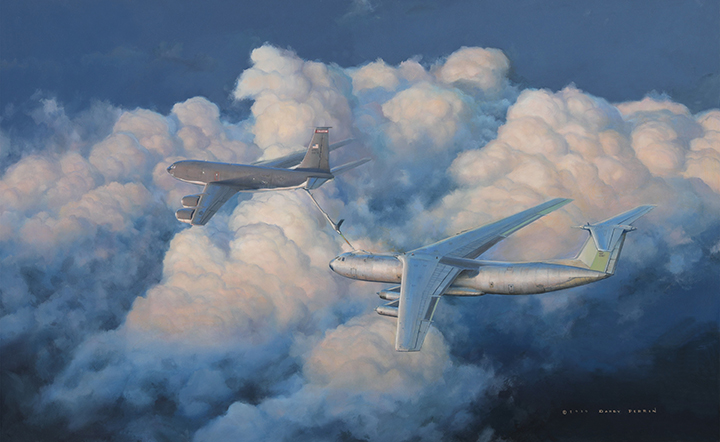
CLICK IMAGE TO DOWNLOAD HIGH RESOLUTION

Artist: Senior Master Sgt. (ret.) Darby Perrin
Medium: Oil
Date: 2020
At the start of Operation DESERT SHIELD in August of 1990, the C141-B Starlifter was well established as the workhorse and preeminent airlifter of Military Airlift Command. Nearing the end of its programmatic life, an unprecedented need for airlift during Operation DESERT SHIELD and Operation DESERT STORM radically altered its operations squeezing every drop from the venerable airlifter. Aircrew duty days were extended, crew maximum flying time was waived, and unit training was suspended. Home station and depot maintenance were expedited, with a focus on returning as many aircraft to service as soon as possible. To hasten the effort, Robins Air Logistics Center was directed to delay paint jobs and cease in-depth overhaul on the C141Bs, leaving the aircraft bare aluminum skin exposed to the elements. Affectionately referred to by C-141B aircrews and maintainers as “silver bullets,” those aircraft were part of the Starlifter’s immense effort that provided for the movement of 159,462 tons of cargo and 20,000 passengers--more than thirty percent of all airlift during DESERT STORM/ DESERT SHIELD.
Perfected during Operation DESERT SHIELD/STORM, the “air bridge” played a crucial role in the success of the airlift campaign. During the conflict, a combined total of 270 million pounds of fuel was transferred in flight to satisfy contingency operations. Featured in this composition is a KC-135R Stratotanker air refueling a C-141B Starlifter to expedite cargo and PAX in route from Dover AFB, Delaware, to Dhahran AB, Saudi Arabia.
Comprising 20% of the total force, todays Air Force Reserve continues to fill a critical role in aerial refueling and airlift operations. Reserve aircrews continue to answer the call of our nation’s air mobility requirements and worldwide contingency operations.